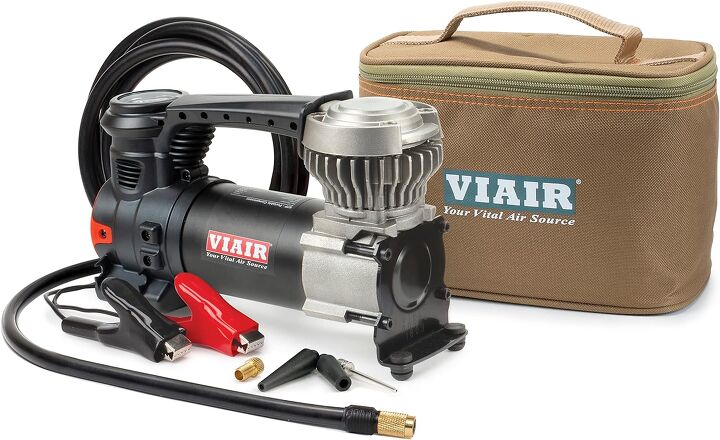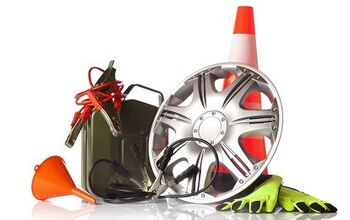How Do I Adjust My Tire Pressure?

The nature of owning and/or operating a vehicle comes with the inherent likelihood that at some point the amount of air in one’s tires will need to be adjusted. This can be up or down; certain weather and climates or circumstances may dictate the need to remove or add air. Luckily, this is a relatively easy process done with simple, inexpensive tools.
First things first, always be sure to check the recommended pressure for your vehicle. This is usually found on a sticker located on the driver door jamb, though it can also be found in the owner’s manual and sometimes online as well. For most use cases, running the recommended pressure is the way to go; however, there are circumstances in which you don’t want to do so. More on that later.
Adjusting your tire pressure is a simple task. For the sake of this discussion, let’s say the automobile in question has a recommended pressure of 35 PSI for both the front and back tires.
Increasing Tire Pressure
While it would be great if every vehicle had the Humvee’s impenetrable tires and central tire inflation system (CTIS), raising the amount of pressure on the common car is slightly more involved than pushing a button on the dashboard. Circumstances in which raising the tire pressure include, but are not limited to, atmospheric conditions that cause PSI to decrease in colder weather, under-inflated tires after being replaced, slow leaks that require adding air, reinflating the tires after off-roading, and some performance driving events like autocross and track days for which it is recommended that the tire pressure is increased.
There’s plenty of ways to increase the PSI in your tires, but they’re all different means to the same end. The crux of the job is attaching an inflating device to the stem that pokes out through the wheel, which in turn allows for air to be forced in through a Schrader valve used to let air in (and stay in) or out, which we’ll cover later.
The device used to add air to the tires can come in many forms and from many sources. Gas stations generally have large machines for the task, and in some states like Connecticut using the air is free (though you will probably have to ask the store clerk to turn the machine on). Portable compressors can also be purchased through vendors like Amazon. These plug into the vehicle’s 12V power source (i.e., cigarette lighter) or in more heavy-duty instances attach to the main battery’s terminals. Some off-roaders go so far as to permanently install compressors in their vehicle or bring along a large tank like the Power Tank to carry air for rapid inflation.
The steps to raise your tires’ pressure is as follows: Remove the valve stem cap; Attach the device’s filling point; Inflate to the pressure as needed. Some inflation devices have built-in gauges that will display or indicate the pressure, and others require stopping the inflation process, removing the inflator, checking the pressure with a gauge, and repeating the process until the tire is holding the desired air pressure.
Decreasing Tire Pressure
On the contrary, there are some instances in which lowering the PSI is needed. Circumstances that may mandate this include, but are not limited to, tires being over-inflated from the factory, dealer, or after being replaced; improving ride quality should high PSI cause an overly jarring ride; and, off-roading (lowering the PSI allows the tires to better do their job of grabbing onto obstacles).
Lowering the PSI in your tires is a simple job even compared to the simple job of inflating tires. Most stick-style analog tire pressure gauges have a small point on the back which can be used for the tank, but anything with a tip or surface small enough to depress the Schrader valve will do the job. Just be sure to keep a gauge nearby as the air can come out surprisingly quickly, and the pressure should be checked often to assure it isn’t set lower than ideal. Should you want to deflate rapidly, there are options like the ARB Deflator Kit that allows for airing down tires to take a fraction of the time versus simply depressing the valve stem.
The steps to lower your tires’ pressure is as follows: Remove the valve stem cap; Use the tool at hand to push down on the small valve core that lives within the valve stem itself; Decrease pressure as needed while checking every so often to get the PSI right.
Checking Tire Pressure
In most cases, tire pressure is adjusted and set for on-road purposes to optimize ride quality, fuel efficiency, and tire longevity. So how do you know if it’s right? The primitive method is the “chalk test.” This entails taking a piece of chalk, drawing a line horizontally across the tread blocks, driving forward and backward a bit, and seeing if the chalk has worn away evenly. If the middle of the tread has lost its chalk and left it on the ground, the tire is overinflated and the PSI should be decreased. If the outside of the tread has lost its chalk and left it on the ground, the tire is underinflated and the PSI should be increased. If the chalk is left evenly across the ground, the tires’ PSI should be just about right. Still, it’s worth it to consider your vehicle’s recommended PSI and adjust as needed for your usage case.
Become an AutoGuide insider. Get the latest from the automotive world first by subscribing to our newsletter here.

Ross hosts The Off the Road Again Podcast. He has been in the off-road world since he was a kid riding in the back of his dad’s YJ Wrangler. He works in marketing by day and in his free time contributes to Hooniverse, AutoGuide, and ATV.com, and in the past has contributed to UTV Driver, ATV Rider, and Everyday Driver. Ross drives a 2018 Lexus GX460 that is an ongoing build project featured on multiple websites and the podcast.
More by Ross Ballot




































Comments
Join the conversation